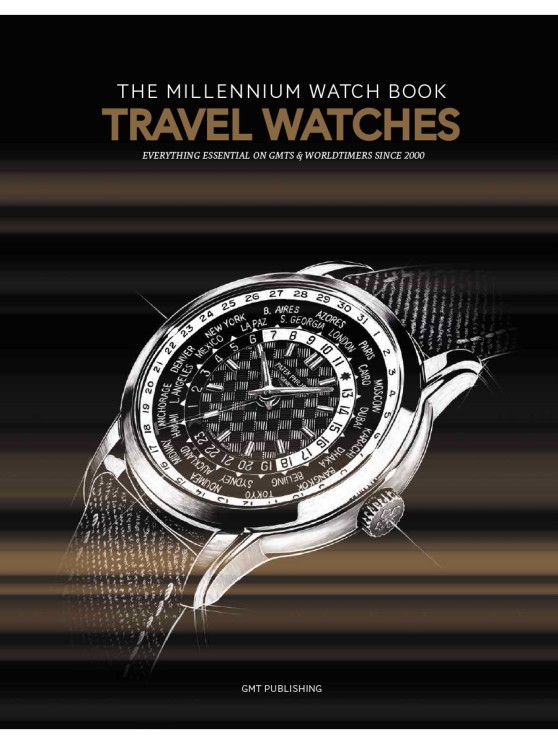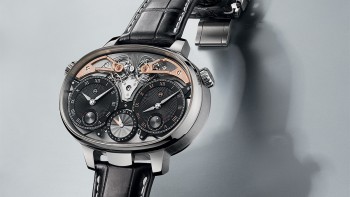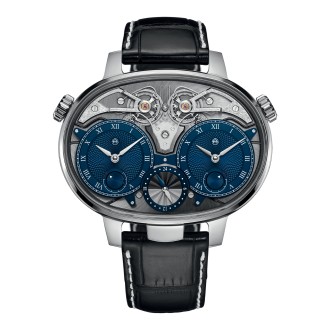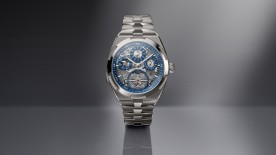In 2006, when Serge Michel and Claude Greisler took over the business of watchmaker Armin Strom whom they had both known from a very young age, they set out to “change the direction from purely handmade skeletonised watches to a fully equipped Manufacture, which we are today”. Nonetheless, for several years Armin Strom remained predominantly recognised for its striking skeletonised movements and focused on time-only watches, until it made waves in 2016 with the introduction of the Mirrored Force Resonance. This model showcased the brand's unparalleled horological expertise, leaving enthusiasts in awe. It featured twin oscillators connected by a beautiful and intricate steel spring, which added a visually striking element to the innovative timepiece. Building upon this success, Armin Strom further explored the concept of resonance by harnessing the innovative double balance construction to unveil the Masterpiece 1 Dual Time Resonance in 2018.
The intriguing phenomenon of resonance – whereby two closely positioned oscillating bodies influence each other and eventually synchronise – was first documented in 1665 by Christiaan Huygens, a versatile Dutch scientist, mathematician, astronomer and inventor. Huygens stumbled upon this discovery when he noticed two of his newly invented pendulum clocks oscillating harmoniously. He observed that if their synchronisation was disrupted by external interference, it would spontaneously reestablish itself within a short period.
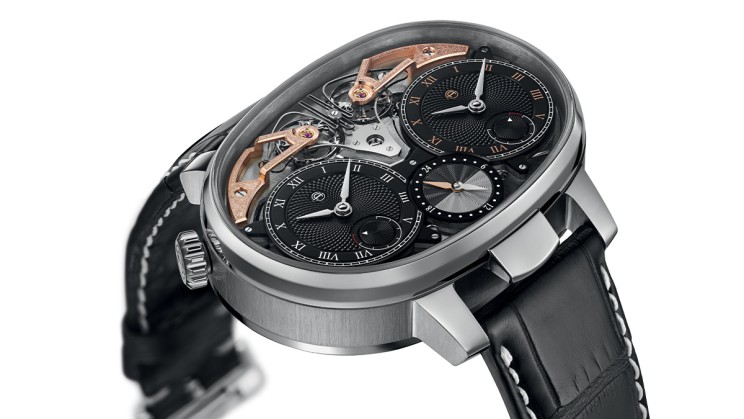
Time for Resonance
Despite its early discovery, watchmakers did not embrace the application of resonance in scale. One of the well-known examples is the 1790s adaptation of the principle by Abraham-Louis Breguet for his “Pendules Sympathiques.” Recently, watchmakers seeking to enhance accuracy and stability have explored the synchronicity of oscillators in wristwatches. While notable examples include creations by François-Paul Journe, Beat Haldimann and Antoine Preziuso, the Armin Strom Mirrored Force Resonance showcased one of the most captivating utilisations of this phenomenon.
The Armin Strom Masterpiece 1 Dual Time Resonance was first released in a titanium case and featured manually-wound Calibre AFR17, featuring two movements side by side on the same mainplate. Each has its barrel, gear train and regulator to display an independent time zone via two dials, with the time for each adjusted via a dedicated crown. Each time display has its own power-reserve indication and there’s a 24-hour day/night indication positioned in the centre at the bottom of the dial with the hand matching the colour of the hour-markers on their respective subdial.

Ode to Science & History
These convenient displays adapt to all types of time zones, including unusual ones, which vary by half or quarter of an hour, as they are set independently. While imagining a large (Dual Time Resonance case measures 59mm x 43.4mm and 15.90mm thick) pocket-watch-size horological creation with two independent movements and two dials is relatively easy, such a wristwatch would not necessarily earn a place in this book. The interdependent twin movements make the Armin Strom Dual Time Resonance stand out. Their oscillators prominently placed at 12 o’clock are linked by the patented clutch spring to amplify resonance and synchronise their beats. All four barrels (two for each movement) are simultaneously wound by the same crown to ensure uniform winding. This composition ensures that the barrels deliver the same energy to their associated oscillator and avoids any disturbance to the resonance phenomenon. The power reserve is a robust 110 hours for each movement when fully wound, and the remarkable conical power-reserve mechanisms are visible through the sapphire caseback.
The Armin Strom Masterpiece 1 Dual Time Resonance calibre AFR17 is adorned with a circular Côtes de Geneve pattern and the ratchets are openworked, showing how tightly the mainsprings are wound. On the dial side, the two balance-cocks holding the balance wheels feature a tremblage finish, executed by hand. The time dials display superb guilloché patterns handcrafted by Kari Voutilainen.
The Armin Strom Masterpiece 1 Dual Time Resonance is an exuberantly over-the-top, highly complex creation leveraging the concept that has fascinated many watchmakers but which very few have been able to implement. A nod to both science and history, it was and still is proof of Armin Strom's great watchmaking talent. Masterpiece 1 Dual Time Resonance is a timepiece that would be hard not to notice for its gigantic size. After all, the case is just a window into the world of physics, with its laws applied and showcased in this captivating dual-time timepiece. While a smaller, differently designed version of Dual Time Resonance is set for release by Armin Strom in the near future, the inaugural one will forever be remembered.
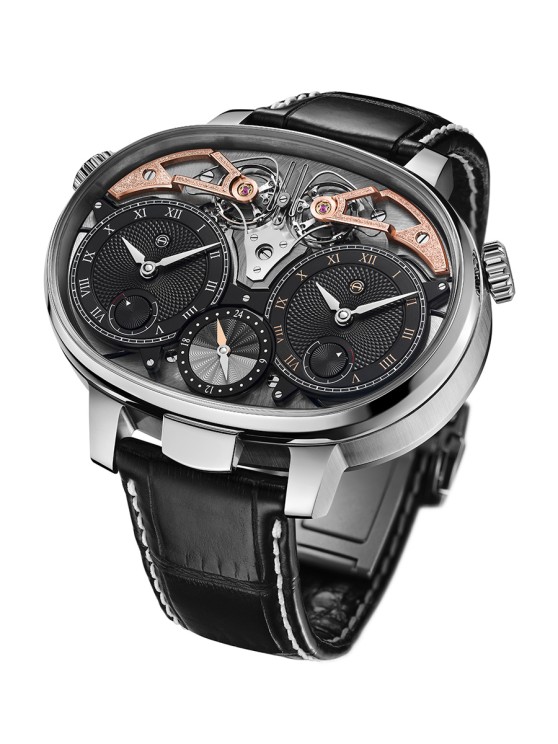
Armin Strom Masterpiece 1 Dual Time Resonance
Case: Available in titanium, white gold, 18K pink gold versions with a sapphire crystal, all water-resistant to 50m
Size: 59mm x 43.4mm, and 15.90mm thick
Movement: AFR17, manually wound, 110-hour power reserve
Functions: dual time via two dials with hours and minutes, 24-hour day/night and power-reserve indication
Strap: alligator leather, with pin buckle or double-folding clasp
Launch year: 2018
This year, GMT Magazine and WorldTempus have embarked on an ambitious project: summarising GMT and Worldtimer watches since 2000 in The Millennium Watch Book - Travel Watches, a beautifully laid-out coffee table book. This article is an excerpt of the book. The Millennium Watch Book - Travel Watches is available for preorder in both French and English here.
